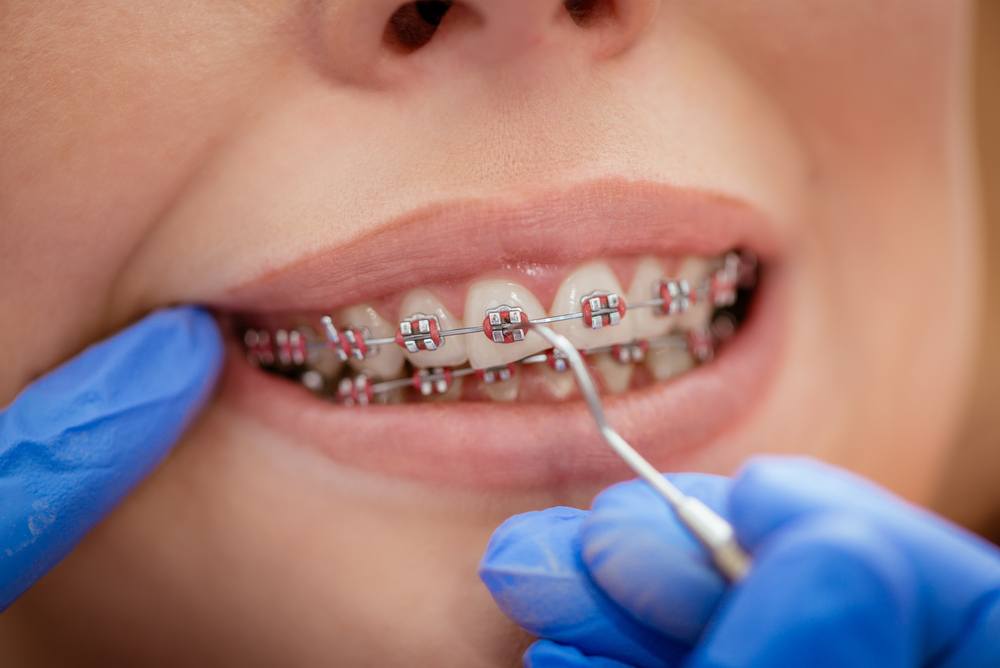Comprehensive Guide to Orthodontics Procedures for Fixing Dental Misalignments
In the realm of orthodontics, the trip to attaining a perfectly lined up smile entails a myriad of treatments customized to remedy dental imbalances. From typical braces to unnoticeable aligners and even medical choices, the field of orthodontics supplies an array of services to attend to varying degrees of oral abnormalities. Recognizing the details of each treatment, including their mechanisms, advantages, and prospective drawbacks, is vital in making educated decisions about one's orthodontic treatment. As we navigate through the thorough guide to orthodontic procedures for remedying dental imbalances, the elaborate information of each approach will unravel, clarifying the path towards a functional and harmonious dental positioning.
Orthodontic Procedures Introduction

Along with clear aligners and conventional braces, orthodontists may also advise various other treatments like headwear, palatal expanders, or retainers to address specific alignment issues (cumming orthodontist). These procedures are tailored to each patient's distinct needs and might entail a mix of treatments to achieve the wanted outcomes. Normal changes and surveillance are crucial parts of orthodontic therapy to make certain progression gets on track and to make any kind of required adjustments along the method. By going through orthodontic procedures, individuals can not only attain a straighter smile yet additionally boost their total oral health and wellness and function.
Traditional Dental Braces: Exactly How They Work
When considering orthodontic therapies for oral imbalances, conventional dental braces stand out as a tried and true technique for dealing with teeth placing. Conventional dental braces include braces, wires, and bands that collaborate to apply continual pressure on the teeth, slowly relocating them right into the wanted alignment. The brackets are affixed to the teeth utilizing an unique adhesive, and the cords are threaded via the braces. By adjusting the tension of the wires, orthodontists can control the direction and force related to each tooth, directing them into appropriate positioning gradually.
As pressure is used to the teeth via the dental braces, the bone surrounding the teeth is reshaped to sustain the brand-new tooth settings. Patients will certainly need regular modifications at the orthodontist's workplace to ensure the dental braces proceed to use the right stress official source for effective teeth activity.
Invisible Aligners: Advantages And Disadvantages
Invisible aligners supply a very discreet and hassle-free choice to standard braces for remedying dental imbalances. These clear, customized trays are virtually invisible when worn, making them an attractive option for individuals seeking a much more cosmetically pleasing orthodontic treatment. One of the main advantages of unnoticeable aligners is their removability, permitting for root canal much easier upkeep of dental hygiene contrasted to traditional braces. Clients can eliminate the aligners prior to eating or brushing their teeth, minimizing the threat of food getting stuck in the appliance and simplifying the cleaning procedure.

Surgical Orthodontic Options
Surgical treatments in orthodontics present viable alternatives for dealing with complex oral misalignments that might not be efficiently dealt with via traditional orthodontic therapies. While unnoticeable aligners and standard braces can deal with numerous orthodontic concerns, specific cases need medical treatment to accomplish optimum results. Surgical orthodontic alternatives are usually advised for severe malocclusions, substantial jaw disparities, and instances where the underlying bone structure requires modification to accomplish correct positioning.
One common surgical orthodontic treatment is orthognathic surgical procedure, which includes rearranging the jaws to remedy practical problems such as problem speaking or chewing. This surgical procedure is frequently executed in partnership with an orthodontist who helps align the teeth before and after the treatment. Surgical orthodontics might likewise involve procedures to reveal influenced teeth, eliminate excess periodontal cells, or improve the jawbone to produce a more harmonious face profile.
Before considering medical orthodontic alternatives, patients undergo a detailed examination to determine the need and possible advantages of such treatments. cumming orthodontist. While surgical procedure might appear daunting, it can sensitive teeth considerably improve both the function and looks of the smile in cases where standard orthodontic therapies fail
Retainers and Post-Treatment Treatment

Post-treatment care involves adhering to the orthodontist's directions carefully. This may include correct dental hygiene practices, participating in follow-up consultations, and using the retainers as recommended. Failure to comply with post-treatment treatment directions can result in regression, where the teeth slowly return in the direction of their original placements. Consistent retainer wear, good oral hygiene, and normal dental examinations are important for maintaining the outcomes attained via orthodontic surgery and ensuring the lasting stability of the fixed oral positioning.
Verdict
In final thought, orthodontic treatments supply various alternatives for correcting dental misalignments. Surgical orthodontic options are offered for a lot more serious imbalances. Overall, orthodontic procedures can effectively enhance dental health and aesthetic look.
As we browse via the comprehensive guide to orthodontic procedures for dealing with oral imbalances, the complex information of each technique will unfold, shedding light on the path towards a useful and unified oral positioning. - aligners
One of the most common orthodontic treatments is the usage of braces, which are composed of metal brackets and wires that use mild pressure to gradually change teeth right into the preferred placement.When thinking about orthodontic treatments for oral imbalances, typical dental braces stand out as a tried and true method for dealing with teeth positioning. Additionally, invisible aligners might not be appropriate for complex orthodontic concerns that need more substantial teeth motion, as they are generally recommended for light to moderate instances. Retainers are tailor-made orthodontic devices made to hold teeth in their corrected positions after the conclusion of orthodontic therapy.